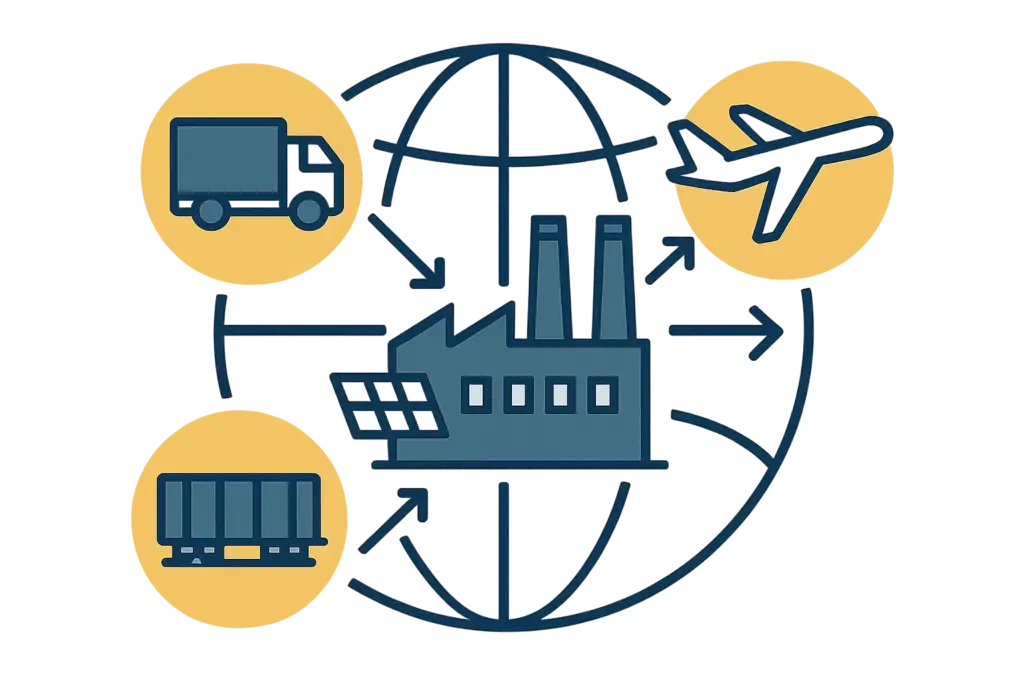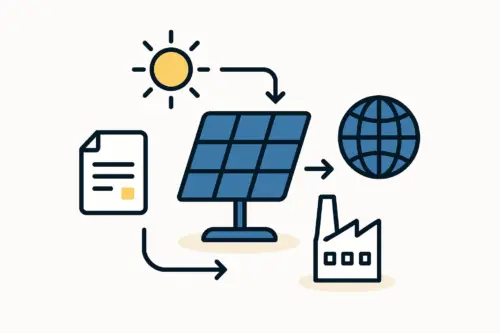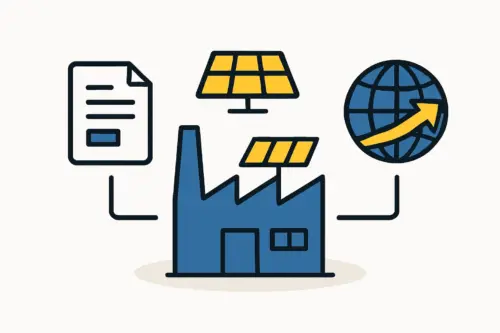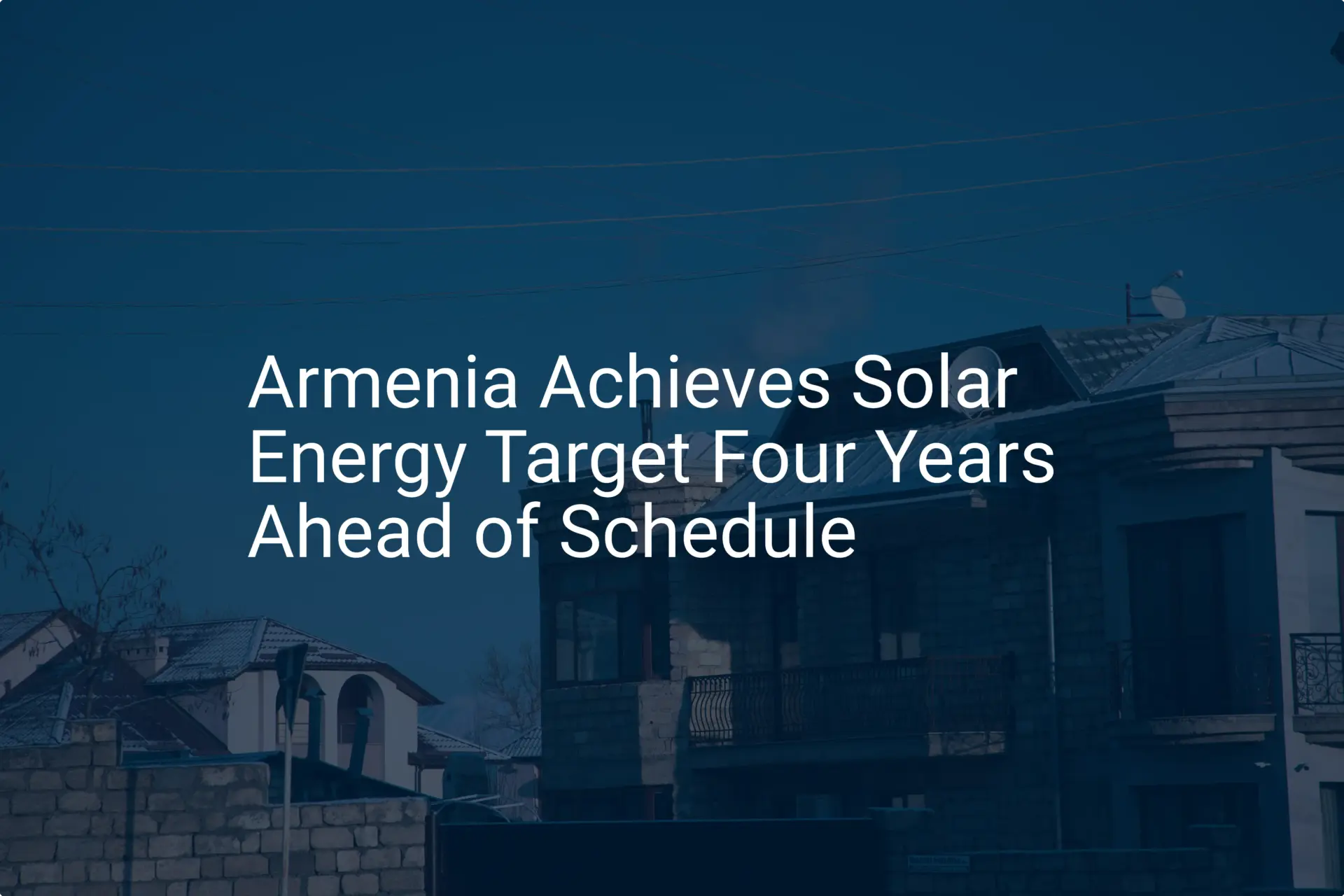With its remarkable solar resources, Armenia is increasingly capturing the attention of entrepreneurs and investors in the renewable energy sector. As the global demand for clean energy solutions intensifies, establishing local solar module production lines becomes an ever more attractive prospect.
But what does it really take to turn this potential into a thriving manufacturing operation? A critical first step is a thorough understanding of the existing infrastructure—the logistical networks, energy supply, and industrial facilities that form the backbone of any successful solar manufacturing venture.
In this assessment, we’ll delve into the key infrastructural elements for anyone considering setting up a solar module production plant in Armenia. We’ll explore transportation capabilities, the reliability of the energy grid, and the advantages offered by its industrial zones. For entrepreneurs and companies looking to tap into Armenia’s solar promise, understanding these foundational aspects is absolutely essential for making informed decisions and planning for operational excellence.
Table of Contents
Armenia’s Burgeoning Solar Sector: The Foundation for Manufacturing
First things first: Armenia stands out for its significant solar energy potential. The country enjoys an average annual solar energy flow of approximately 1720 kWh/m², which is considerably higher than the European average of 1000 kWh/m². In fact, about a quarter of Armenia’s territory boasts solar resources reaching up to 1850 kWh/m² per year. This incredible natural advantage provides a strong impetus for developing a robust solar industry, including manufacturing.
The Armenian government has certainly recognized this potential and is actively promoting renewable energy with a particular focus on solar. Ambitious targets have been set to increase the share of solar power in the country’s energy mix, a commitment that’s reflected in the steady growth of installed solar capacity. As of July 2022, Armenia had approximately 102.8 MW of solar PV installations in operation, with an additional 176.7 MW under construction. On top of that, over 6,940 autonomous solar power producers, totaling 136.1 MW, were also connected to the grid.
Landmark projects like the Masrik-1 solar power plant—slated to be the largest in Armenia with a planned capacity of 55–62 MW—underscore the sector’s maturation and the country’s capability to handle large-scale solar developments. This project alone will feature nearly 115,000 solar panels, showcasing the growing domestic demand and operational experience. Developments like this not only contribute to Armenia’s energy independence but also help create an environment that is genuinely ripe for local solar manufacturing.

Logistical Lifelines: Assessing Armenia’s Transportation Network for Solar Manufacturing
It’s a simple truth: for any manufacturing operation, especially one dealing with components as bulky and delicate as solar modules, efficient logistics are non-negotiable. This involves both the smooth inflow of raw materials and the effective distribution of finished products.
A. Overview: The Landlocked Challenge and Strategic Responses
Let’s be upfront about the main challenge: Armenia is a landlocked country. This has historically presented logistical hurdles, particularly for access to seaports, which happens primarily through Georgia. Closed borders with Turkey and Azerbaijan also influence transport routes and costs. The Armenian government, however, is actively working to mitigate these challenges and position the country as a regional transit hub. Initiatives like the “Crossroads of Peace” project aim to unblock regional transport and economic links, which could potentially transform Armenia’s logistical landscape.
B. Road Freight
The road network is the primary mode of freight transport, both within Armenia and for connecting to neighboring countries. Major highways linking industrial centers and border points are absolutely crucial for solar manufacturing. While there’s room for improvement in road infrastructure, ongoing investments are aimed at upgrading key corridors. For a solar manufacturer, the capacity of these roads to handle heavy freight—including manufacturing equipment and large shipments of solar components—is a key consideration. Efficient cross-border trade facilitation is also vital for importing raw materials and exporting finished modules.
C. Rail Freight
While more limited than its road system, Armenia’s rail network does play a role in handling industrial cargo. Modernization efforts are underway to enhance its capacity and efficiency. For the right kind of shipments, rail transport can be a cost-effective option for bulk materials and could be integrated into a multimodal logistics strategy for solar manufacturers, especially with the development of dry ports.
D. Air Freight
Zvartnots International Airport near Yerevan is the country’s main hub for air cargo. While typically more expensive, air freight can be essential for time-sensitive deliveries, such as importing specialized, high-value manufacturing equipment or exporting premium solar components. The capacity and services offered for handling such delicate or urgent cargo are important factors to weigh.
E. The Gyumri Dry Port Initiative
One of the most significant developments on the horizon is the plan for a new dry port in Gyumri. This initiative is expected to streamline logistics by creating an inland intermodal terminal directly connected by road or rail to a seaport. For manufacturers, a dry port can reduce transit times, simplify customs procedures, and lower overall transportation costs—effectively bringing port functionalities closer to the country’s industrial hubs.
F. Logistical Performance and Considerations for Solar Manufacturing
So, what does this all mean for a potential investor? You’ll need to carefully evaluate:
- Transport Costs: The real-world effect of Armenia’s landlocked status and current border situations on your overall shipping expenses.
- Lead Times: The time it will actually take for importing necessary raw materials (like silicon, glass, aluminum frames, EVA, and backsheets) and for exporting finished solar panels.
- Special Handling: The ability of local transport providers to manage the specific requirements for solar materials, which can be fragile or need specialized packaging.
On a positive note, the successful construction and component logistics for massive projects like Masrik-1 demonstrate a growing capability within Armenia to manage large-scale solar project requirements, which points to a strong support system for manufacturing.

Powering Production: Energy Infrastructure for Solar Manufacturing Plants
It goes without saying that a stable and reliable energy supply is the lifeblood of any modern manufacturing facility, and solar module production is certainly no exception. Consistent, high-quality power is critical for operating sensitive machinery and ensuring product quality.
A. Armenia’s National Energy Grid
Armenia’s energy mix has traditionally relied on nuclear power and thermal plants, with a steadily increasing share from renewables like hydropower and solar. The International Energy Agency (IEA) has highlighted Armenia’s efforts to diversify its energy sources and enhance energy security. Of course, for industrial users, grid stability and reliability are everything. While Armenia has made great strides, ensuring consistent power for energy-intensive manufacturing processes requires a careful, site-specific assessment.
B. Electricity Access in Industrial Zones
Key industrial zones and potential manufacturing sites must have robust connections to the national grid with sufficient capacity. For a solar manufacturing operation, here’s what you need to evaluate:
- Power Availability: Ensuring the allocated power truly meets the demands of a full-scale production line.
- Power Quality: Voltage stability and minimal frequency of outages are crucial, as even small fluctuations can damage sensitive equipment and hurt production yields.
- Infrastructure: The condition of local distribution networks, transformers, and substations that service these zones.
C. Future Energy Landscape
The Armenian government is committed to modernizing its energy grid and significantly increasing the proportion of renewable energy. This includes investments in smart grid technologies and upgrading transmission and distribution infrastructure. This also presents an interesting opportunity for captive power generation—installing your own solar arrays on factory rooftops to supplement the grid, reduce energy costs, and enhance your sustainability credentials.
Hubs of Innovation: Industrial Zones and Facilities for Solar Manufacturing
One of Armenia’s most compelling draws for investors is its designated industrial zones, including Free Economic Zones (FEZs), which are designed to attract investment through a favorable business environment and specific incentives. These zones can be ideal locations for setting up a solar manufacturing plant.
A. Overview of Armenia’s Free Economic Zones (FEZs)
Armenia has several FEZs, each catering to different industrial focuses:
- Alliance FEZ (Yerevan): Concentrates on high-tech industries, electronics, and precision engineering. This zone already hosts LA Solar, a solar panel manufacturer, which is a strong signal of its suitability for the sector.
- Meridian FEZ (Yerevan): Primarily focused on jewelry, diamond cutting, and watchmaking.
- Meghri FEZ (Syunik Region): Located near the Iranian border, it aims to foster trade and manufacturing cooperation with Iran, covering areas like agriculture, manufacturing, and logistics. Its proximity to a key border could be a strategic advantage.
- ECOS FEZ (Hrazdan): Targets high-tech industries, including IT, electronics, and potentially related manufacturing activities.
B. Incentives and Benefits for Manufacturers in FEZs
Operating within an FEZ typically offers some very significant advantages:
- Tax Exemptions: Relief from profit tax, Value Added Tax (VAT), excise tax, and customs duties on imported raw materials and equipment, as well as on exported finished goods.
- Simplified Procedures: Streamlined administrative processes for business registration, permits, and daily operations.
- Infrastructure Support: FEZs often provide ready-to-go access to utilities and basic infrastructure.
C. Suitability Analysis of FEZs for Solar Manufacturing
When you’re evaluating FEZs for a solar module production site, here are the key criteria to look at:
- Infrastructure Readiness: Is there sufficient land, reliable power and water, waste management facilities, and pre-built or customizable factory shells?
- Transport Links: How good is the connectivity to major road networks, rail lines, and the future Gyumri dry port?
- Labor Pool: Is there good access to skilled and semi-skilled labor, including the technicians and engineers you’ll need?
- Industry Clusters: Is there potential for synergy with other high-tech or related industries within or near the zone? This can help foster a local supply chain over time.
D. Existing Solar Manufacturing Ecosystem
Crucially, anyone looking to invest here isn’t stepping into a vacuum. Armenia is not starting from scratch in solar manufacturing. Companies like Solaron Armenia, with a reported annual production capacity of 60 MW, and LA Solar, operating within the Alliance FEZ, have already established a local manufacturing presence. Their experience clearly demonstrates the feasibility of producing solar panels in Armenia. The presence of these players also helps nurture the development of a local supplier base for auxiliary materials and specialized services, which strengthens the entire ecosystem.

Navigating the Setup: Regulatory Environment and Investment Support
Of course, physical infrastructure is only half the battle. The regulatory framework and available support systems are just as crucial. Armenia has been actively working to improve its investment climate, and key government bodies like the Ministry of Economy and various investment promotion agencies exist to help facilitate new ventures. Understanding the permitting and licensing processes for establishing and operating an industrial plant is an essential piece of homework.
The availability of a skilled workforce, including engineers and technicians familiar with manufacturing processes, is another significant factor. While Armenia has a strong educational tradition, specific training tailored to solar manufacturing skills might be an area for development or for collaboration with local vocational institutions.
Conclusion: Is Armenia Primed for Your Solar Manufacturing Venture?
So, what’s the verdict? Armenia presents a compelling case for establishing solar module manufacturing operations. Its abundant solar resources create a natural foundation, while the government’s strong commitment to renewable energy provides a supportive policy backdrop. The fact that established local manufacturers like Solaron and LA Solar already exist proves the viability of such ventures. And, of course, the Free Economic Zones offer attractive fiscal incentives and infrastructural support that can significantly lower setup and operational costs.
That said, this isn’t a decision to be taken lightly. Potential investors must conduct thorough due diligence. While strategic initiatives like the “Crossroads of Peace” and the Gyumri dry port promise to enhance logistical efficiency, the current transportation costs and lead times—particularly given Armenia’s landlocked status—require careful analysis. Securing a consistent and high-quality power supply in your chosen industrial location is also absolutely critical for sophisticated manufacturing processes.
By carefully assessing these infrastructural elements and understanding the regulatory landscape, entrepreneurs can strategically position themselves to capitalize on Armenia’s solar manufacturing opportunities. Our extensive experience at PVknowhow.com in setting up solar factories worldwide means we can provide invaluable expertise in navigating these complexities, from initial business planning all the way to turnkey production line implementation.
Want to learn more or need expert help? Visit our free e-course or explore our services. Or, if you’re ready to dive deeper, our Premium Business Plan E-Course offers personalized guidance to get your venture off the ground. Let’s make your solar journey smooth and successful.
Frequently Asked Questions (FAQs)
Q1: What are the main logistical challenges for setting up solar manufacturing in Armenia?
A: The main hurdle is its landlocked geography, which means higher transportation costs and longer lead times for sea freight, as it relies primarily on Georgian ports. Closed borders with Turkey and Azerbaijan also limit direct access to some routes. However, major initiatives like the Gyumri dry port and the “Crossroads of Peace” project are actively working to improve this.
Q2: How reliable is the energy supply for industrial manufacturing in Armenia?
A: Armenia is modernizing its grid and increasing its use of renewables. While the grid does supply industrial zones, any manufacturer with sensitive equipment should conduct a detailed assessment of power quality at their specific chosen location. FEZs often prioritize reliable utility infrastructure, which is a good place to start.
Q3: What specific incentives do Free Economic Zones (FEZs) in Armenia offer for solar manufacturers?
A: FEZs offer very significant incentives. These typically include exemption from profit tax, VAT (on imported raw materials/equipment and exported goods), customs duties, and excise taxes. They also usually provide much simpler, streamlined administrative procedures.
Q4: Are there existing solar panel manufacturers in Armenia?
A: Yes, there are. Companies like Solaron Armenia and LA Solar (which is located in the Alliance FEZ) are already manufacturing solar panels in the country. This indicates a foundational local industry and know-how.
Q5: What is Armenia’s solar energy potential?
A: Armenia has exceptionally high solar irradiation levels, with an average annual solar energy flow of around 1720 kWh/m², well above the European average. Some regions even boast up to 1850 kWh/m² annually, making it an ideal place for solar energy generation and manufacturing.
Q6: How can PVknowhow.com assist with setting up a solar manufacturing plant in Armenia?
A: We offer end-to-end solutions, from turnkey production equipment and comprehensive business planning to technical consulting and educational resources. With over two decades of hands-on experience, we guide clients through every stage of building and operating a successful solar factory in Armenia or anywhere else in the world.






